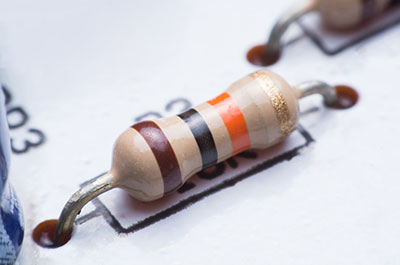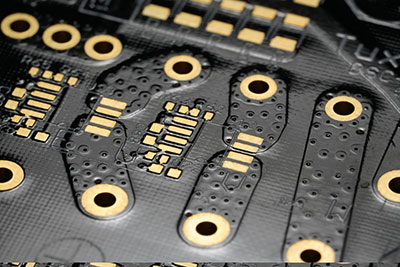Although LEDs have provided energy-efficient light sources, there is still the need to increase energy savings to conserve the planet and reduce energy bills. Photocell sensor is some of the vital devices required for enhancing this efficiency because they create automatic light fixtures that turn on at dusk and off at dawn. But how do they work? We will look at these dusk-to-dawn sensors to explain their operating principle and how to install them. Let's get right into it!
Contents
- What Is a Photocell Sensor?
- Types of Photocell Light Sensors
- How a Photocell Sensor Works
- Photocell vs. Timer
- Photocell Sensors vs. Motion Sensors
- Active Motion Sensors
- Passive Motion Sensors
- Photocell Sensor Applications
- How To Install a Photocell Light Sensor for Outdoor Lights
- Procedure
- Tips for Photocell Light Sensor Installation
- Don't Place Then in the Path of Light
- Hide the Sensors
- Keep the Installation Clean
- Follow the Electrical Code
- Wrap Up
What Is a Photocell Sensor?
A photocell sensor is a photodetector that can sense light. The electrical device functions like a timer because it switches light fixtures on or off automatically. However, it doesn't do these actions using a pre-set time. Instead, it senses natural sunlight to control the switching for the artificial light fixture.

A photocell. Note the photoresistor inside.
Types of Photocell Light Sensors
- Plug-in photocells: Work with standard AC wall outlets to control a pass-through plug. They offer a convenient way to turn floor and single table lamps on or off.
- Wired, line-voltage photocells: These dusk-to-dawn sensors control entire electrical circuits, making them ideal for managing outdoor lighting (landscape, security, etc.).
- Candelabra/lamp-base photocells: These devices screw into light bulb sockets to turn almost any light fixture into an automatic lighting system. However, you will require several units to control each lamp individually.
How a Photocell Sensor Works
A photocell sensor is also known as a photoresistor. But it is not like any regular resistor. It is a variable resistor whose resistance changes depending on an external factor (light in this case). And the photoresistor consists of a highly resistant semiconductor material.

A photoresistor (light-dependent resistor)
Electrons have varying energy levels within the semiconductor and arrange themselves in energy bands where similar energy levels stay near each other. The valence band level has the lowest energy, so electrons are the least free because they have minimal movement. On the other hand, the conduction band has the highest energy level and allows free electron movement.
An energy gap separates these bands, and the resistance of the semiconductor depends on the number of electrons in the conduction band to carry electric energy.

An up-close image of a photoresistor
When exposed to light, photons of energy in the light excite electrons in the valence band. This excitement increases the electron energy levels in the valence band, pushing them to cross the energy gap to the conduction band.
So the conduction band will have more electrons, which makes it easier to carry electric energy and drops the photo cell's resistance. It is possible to measure this change in resistance and use it to drive other electronic components, such as to switch lights on or off.
And the photocell function is adjustable in some units, enabling you to choose the ambient light threshold that will activate the photoelectric switch.

A digital photoresistor
Special Offer: Get $100 off your order!
Email [email protected] to get started!
Photocell vs. Timer
Timers operate using a control relay and a built-in time-delay function. So you have to program on and off times to activate or deactivate the switch. There is one problem with this design. The time-delay function does not automatically adjust to changing day and night cycles caused by the different seasons (daylight-saving time). So you will have to calibrate them regularly to match the current time.

An engineer checking four analog timer switches
But photoelectric switches rely on the photocell function, which remains unaffected by daylight saving time. Timers will work on areas within the tropics where the day and night hours remain almost the same. But a photocell will work in all areas because it uses the daylight sensing principle.
Photocell Sensors vs. Motion Sensors
While photocell sensors detect ambient light, motion sensors detect and react to physical movement. Usually, they combine several methods to eliminate false positive motion sensing and enhance coverage. And they come in two types.
Active Motion Sensors
These devices emit sound (ultrasonic or radio) or light to create a detection area. Movement in this area alters the reflected signals, which activates the sensor. Some advanced units can detect movement around corners. Once activated, the sensor switches on the lights.

A solar panel garden light with a motion sensor
Passive Motion Sensors
Passive motion sensors detect the infrared energy emitted by warm objects like human bodies. The movement of these warm objects triggers the sensor to activate the light switch.
Whichever type you use, motion sensors only turn on the lights when they detect motion. So you will have dark spaces at night that can get scary.
Photocell Sensor Applications
- Turning exterior lights on after sunset and off after sunrise
- Adjusting indoor dimmer lights to compensate for changing natural light levels
- Turning on the parking lot or street lights after dark and off after sunrise
- Switching business signs on or off
How To Install a Photocell Light Sensor for Outdoor Lights
You will need the following items.
- Photoelectric switch
- Wire stripper
- Screwdriver
- Needle nose pliers
- Electrical tape
- Electrical caps
Procedure
Switch off the circuit breaker to cut power to the light fixtures. If unsure which one it is, switch all the circuit breakers off. And flip the light switch for these lights to ensure the power is off. The light bulbs should not turn on.
Next, disassemble the light's housing, and you should see a black neutral wire. The dusk-to-dawn light sensor should have two black wires, as well.
Tap the black wire running between the AC power supply and the fixture.

A technician repairing and assembling a photocell sensor
Cut it using the pliers and strip its ends. Connect one wire from the photocell to the black wire from the light fixture and the other to the black wire going to the power supply. Twist the exposed copper wires tightly to create a tight connection.
Cover these joints with electrical caps, then roll the electrical tape around them to wrap around any exposed wire.
Switch the circuit breaker back on and ensure the light switch is on. Cover the photocell using your hand. The light should turn on. And it should turn off when you uncover the photocell.
Complete the process by reassembling the light fixture and positioning the photocell where it gets access to direct sunlight.
Tips for Photocell Light Sensor Installation
Here are a few things to consider when installing this daylight-sensing switch.
Don't Place Then in the Path of Light
A photocell should be under sunlight but away from the path of the light produced by the light fixture. If close to this light path, the photocell will turn the bulb off again because it will sense its light. This situation is known as the photocell tag. After about 10 seconds, the photocell will switch on the bulb because the ambient light will be low. The light from the fixture will cause it to cut the power again, and the cycle will continue.

A photocell for outdoor applications
Hide the Sensors
Light fixtures have beautiful designs and should take most of the attention. Photocells lack design aesthetics, so it is best to hide them from view.
Keep the Installation Clean
Make the installation clean, whether you use conduits or clips to hold the wires. Aesthetics might not be an issue in warehouses or other workplaces, but they matter when you deal with beautiful spaces, such as in resorts.
Follow the Electrical Code
Securing and sealing junction boxes makes the installation safe, but it is code-legal to mount the unit higher up towards the roof or ceiling. Also, it looks better that way. Always follow the electrical code.
Wrap Up
In conclusion, photocell sensors are critical energy-saving devices that automate the on/off switching for your lighting fixtures. And they have an advantage over timers and motion sensors. Also, they are easy to install, as shown above. That's it for this article. Leave a comment or contact us if you have any questions.
Special Offer: Get $100 off your order!
Email [email protected] to get started!







